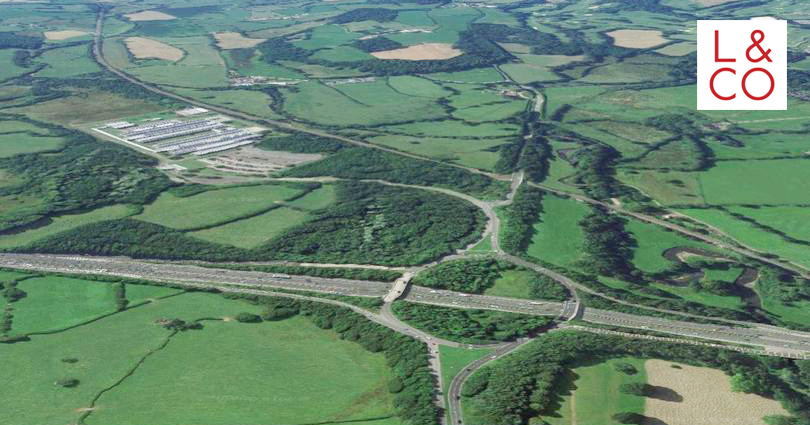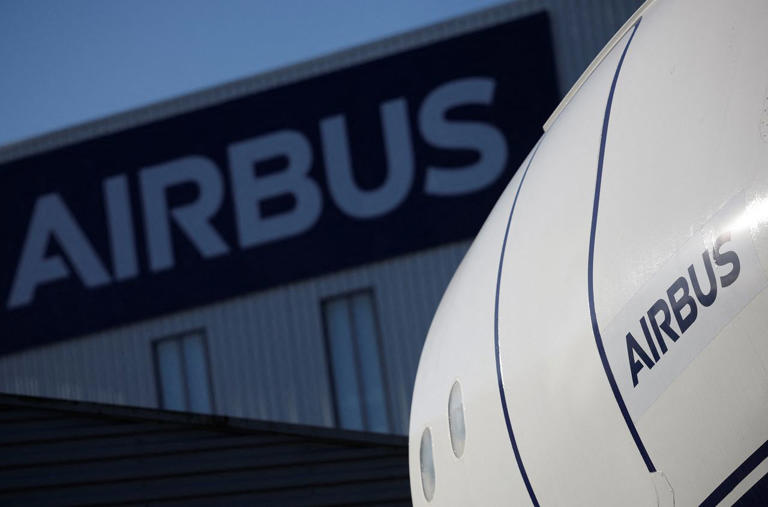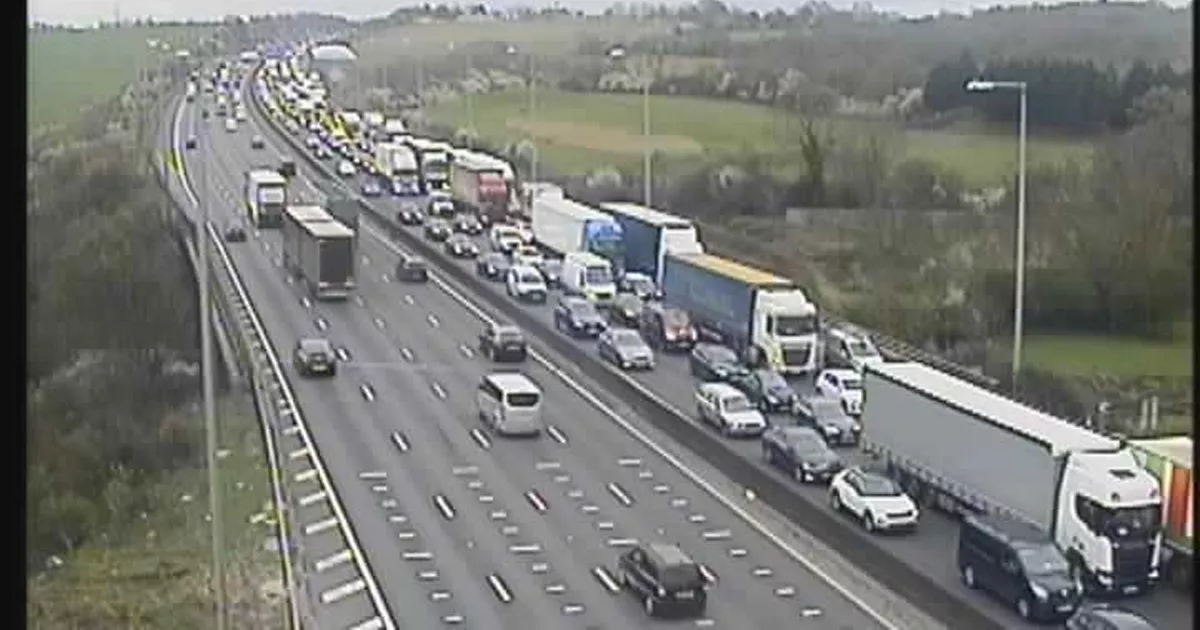The Unbuilt M62 Relief Road: Bury's Lost Highway Project

Table of Contents
The Genesis of the M62 Relief Road Proposal
The seeds of the M62 Relief Road project were sown in the face of growing traffic congestion impacting Bury's economic vitality and residents' quality of life. The existing M62, a vital artery connecting West Yorkshire to Manchester, was becoming increasingly overburdened, with traffic regularly grinding to a halt, impacting businesses and commuters alike. Improved transport links were seen as crucial for stimulating economic development in Bury and enhancing its connectivity within the wider Greater Manchester region. Regional planning strategies identified the need for a bypass to relieve pressure on the existing motorway network.
- Growing traffic congestion: Bury's town centre experienced significant delays, impacting businesses reliant on efficient transport links. Delivery times suffered, and the attractiveness of the town as a place to work and live diminished.
- Proposed economic benefits: The relief road was projected to stimulate economic growth by improving access for businesses, attracting investment, and facilitating easier movement of goods and services.
- Initial plans and proposed route: The initial plans outlined a new road running parallel to a section of the M62, bypassing the congested areas around Bury. The exact route was subject to extensive debate and revisions throughout the planning process.
- Key stakeholders: Local councils, including Bury Metropolitan Borough Council, Greater Manchester Passenger Transport Executive (GMPTE), and national government agencies like the Department for Transport, were heavily involved in the initial proposal and subsequent planning stages.
The Planning Process and Public Opposition
The planning process for the M62 Relief Road proved protracted and contentious. Public consultations were held, and an extensive environmental impact assessment was undertaken. However, the project faced significant opposition from various community groups and environmental organizations.
- Public consultations: While public consultations took place, the level of public participation and the extent to which concerns were addressed remain points of contention even today.
- Key environmental concerns: The proposed route traversed areas of significant natural beauty and green space, leading to concerns about habitat destruction, increased noise pollution, and deteriorating air quality.
- Community protests and action: Opposition to the project manifested in significant protests, petitions, and community action groups dedicated to stopping the relief road. These groups argued the negative environmental consequences outweighed the projected economic benefits.
- Planning inquiry outcome: The planning inquiry ultimately resulted in the rejection of the project, with the objections based primarily on environmental impact and the lack of sufficient mitigation strategies.
Reasons for the Project's Failure
The M62 Relief Road ultimately failed to materialize due to a confluence of factors. No single cause can be definitively cited, but several critical issues contributed to the project's demise.
- Funding issues: Securing sufficient funding for such a large-scale infrastructure project proved challenging, particularly in a climate of competing demands for public resources. Cost overruns were also anticipated, further complicating the financial picture.
- Political opposition: Political disagreements between local councils and central government, as well as divisions within the local community, hampered progress and created significant delays. The project became a political football, with differing priorities and conflicting agendas hindering its advancement.
- Planning obstacles: Unforeseen geological challenges and unexpectedly high environmental impact assessments resulted in significant delays and increased costs, ultimately proving insurmountable obstacles.
- Alternative solutions: The emergence of alternative transportation solutions, such as improved public transport options and traffic management strategies, offered potentially less disruptive and more cost-effective alternatives, diminishing the perceived urgency of the relief road.
The Legacy of the Unbuilt Road
The failure of the M62 Relief Road left a lasting impact on Bury's transport infrastructure and its approach to future planning. The town continues to grapple with traffic congestion, although subsequent improvements to public transport and localized traffic management have offered some mitigation.
- Current state of traffic congestion: Bury still experiences significant traffic congestion, highlighting the continued need for transport solutions, although perhaps of a different nature than the originally proposed relief road.
- Influence on future transport planning: The project's failure has undoubtedly shaped subsequent transport planning in the area, emphasizing the need for comprehensive environmental impact assessments and greater community engagement.
- Long-term consequences: The project's abandonment likely impacted local businesses that had hoped to benefit from improved accessibility and may have influenced the town’s overall economic trajectory.
Conclusion
The story of the unbuilt M62 Relief Road serves as a compelling case study of the challenges inherent in large-scale infrastructure projects. While initially conceived to address crucial transport issues and stimulate economic growth in Bury, the project’s failure ultimately highlights the importance of careful planning, comprehensive environmental assessments, and robust community engagement. The legacy of the M62 Relief Road continues to shape Bury’s transport landscape, reminding us of the complex interplay between economic development, environmental concerns, and public opinion. Learn more about similar unsuccessful infrastructure projects and share your thoughts on the proposed M62 Relief Road! Use #M62ReliefRoad #BuryHistory #UnsuccessfulInfrastructureProjects #TransportPlanning to join the conversation. What lessons can we learn from Bury's lost highway project for future infrastructure developments?

Featured Posts
-
 Sharp Decline In Amsterdam Stock Market Aex Index At 1 Year Low
May 24, 2025
Sharp Decline In Amsterdam Stock Market Aex Index At 1 Year Low
May 24, 2025 -
 Moja Opinia O Porsche Cayenne Gts Coupe Po Przejazdzce
May 24, 2025
Moja Opinia O Porsche Cayenne Gts Coupe Po Przejazdzce
May 24, 2025 -
 Escape To The Country Top Destinations For A Tranquil Getaway
May 24, 2025
Escape To The Country Top Destinations For A Tranquil Getaway
May 24, 2025 -
 Apple Stock Performance Q2 Earnings Beat Forecasts
May 24, 2025
Apple Stock Performance Q2 Earnings Beat Forecasts
May 24, 2025 -
 Serious Crash On M56 Motorway Closed Live Traffic Updates
May 24, 2025
Serious Crash On M56 Motorway Closed Live Traffic Updates
May 24, 2025
Latest Posts
-
 Mia Farrow Trump Should Be Jailed Over Venezuelan Deportation Controversy
May 24, 2025
Mia Farrow Trump Should Be Jailed Over Venezuelan Deportation Controversy
May 24, 2025 -
 Farrows Plea Jail Trump For Deporting Venezuelan Gang Members
May 24, 2025
Farrows Plea Jail Trump For Deporting Venezuelan Gang Members
May 24, 2025 -
 Mia Farrows Outrage Trumps Actions On Venezuelan Deportations Demand Accountability
May 24, 2025
Mia Farrows Outrage Trumps Actions On Venezuelan Deportations Demand Accountability
May 24, 2025 -
 Farrows Plea Prosecute Trump For Handling Of Venezuelan Deportations
May 24, 2025
Farrows Plea Prosecute Trump For Handling Of Venezuelan Deportations
May 24, 2025 -
 Actress Mia Farrow Seeks Legal Action Against Trump For Venezuela Deportation Policy
May 24, 2025
Actress Mia Farrow Seeks Legal Action Against Trump For Venezuela Deportation Policy
May 24, 2025
